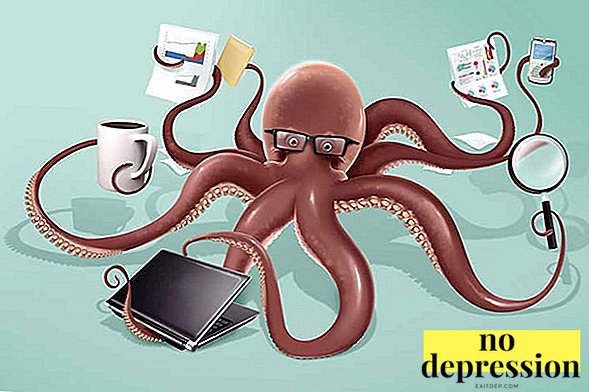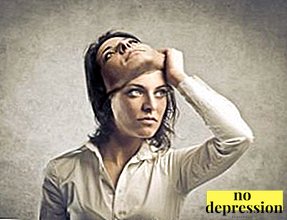Recently, I was wondering what tips you can find on the net about getting rid of panic attacks. I watched some videos on youtube and read some related articles. And he came in complete horror! Is it possible to advise and recommend this? Very many recommendations from the Internet are frankly harmful. They do not help, but only increase panic frustration.
And I realized that I could not stand aside any longer: after all, people are watching, they are adopting weapons and, as a result of carrying out harmful advice, they suffer a complete fiasco in getting rid of panic attacks and panic disorder. Due to the fact that there are many "experts", people who have never suffered panic attacks and have only a remote idea of them.
From the moment I got rid of panic attacks myself (it was 6 years ago), the situation with informing the public about solving this problem has not changed much for the better.
Therefore, in this article and in my video, I decided to analyze all that frank nonsense regarding panic attacks, which I stumbled upon not only in the network, but also in the specialized literature.
I will talk about what should never be done in panic attacks.
Harmful advice 1 - "Take a break for something"
You can often read in different articles: "If you have a panic attack or disturbing thoughts, just get distracted by something: turn on the series, go headlong into the work."
Why is this bad advice?
As I wrote in my article “Causes of Panic Attacks”, avoidance is one of the main causes of panic disorder. While not only avoiding places and situations. And also avoidance of thoughts and emotions.
Attempts to distract from a PA attack are the essence of avoidance. Therefore, distraction can only reinforce fear and anxiety in the long run.
Why is this advice only “conditionally” harmful? Because if we distract from disturbing thoughts, but we do it without trying to resist and avoid, but with acceptance, then this technique becomes extremely effective. I tell about this in my video webinar how to get rid of obsessive thoughts. ”
Bad advice 2 - “replace unrealistic thoughts with realistic ones”
This advice is given in the framework of the cognitive-behavioral model of working with panic disorder. For example, a psychotherapist can teach a patient to replace disturbing, unrealistic thoughts like “my heart stops,” “what if this plane breaks”, into realistic thoughts: “my heart is fine, the PA attack is safe”, “the probability of a plane crash is extremely small ".
And these tips often work great. Cognitive behavioral therapy has proven to be effective in treating panic disorder. But there are a number of difficulties.
- Attempts to “remake” our thoughts can lead to the conviction that unless these thoughts change, we will not be able to take decisive steps towards stabilizing anxiety. But it is not.
- Understanding that thoughts are not rational does not always promise relief. A person may begin to think: “If my thoughts are not rational, then something is definitely wrong with me!”
- When we try to overcome some thoughts with the help of others, there are big risks to “get confused” even more in anxious thinking.
- Replacing thoughts with others can lead to the suppression of unwanted thoughts, which, paradoxically, will cause their increase
- In moments of acute anxiety and panic, it is difficult to convince yourself of “realistic scenarios.” Our consciousness imagines all these frightening pictures, not because it “doesn’t really know how,” but because “the eyes are large in fear,” at such moments the mind will represent the worst scenario, however unrealistic it may be.
Therefore, when I work with my clients, I focus on the “separation” (defusion) technique, just to not react to disturbing thoughts, calmly accepting them. Because this technique has no such restrictions.
Bad advice 3 - “leave the situation when the panic reaches a certain level”
I read this advice in the western best-selling book Anxiety and Phobia Workbook, written by a famous American psychotherapist. Quite a fundamental and useful book. But if you read it without understanding the mechanisms of panic disorder, then it may become a storehouse of harmful advice. This book convinced me that even psychotherapists with the name can give non-working methods, being sure that this is so correct.
The advice from the book concerned how to stop avoiding places and situations. A person was offered, for example, if he was afraid to ride the subway, still going there, trying to cope with fear with the help of various techniques. But at the same time he needs to monitor the level of his panic, noticing when it reaches the “critical level” and then leave the situation.
Indeed, the exposure (meeting with the subject of avoidance) is a good and working technique. But the problem here is that if one constantly thinks about “how strong is fear now,” while anxiously listening to one’s body, such thoughts can paradoxically increase fear. A person will focus on his inner feelings, will “feed” them instead of focusing on his task, namely, go down to the subway and drive through some stops despite the fear that it is already more correct.
Harmful advice 4 - "you just need to learn to relax"
You can often find a video or an article titled “How to get rid of panic attacks,” but at the same time, the video itself will tell you how to cope with a single attack of PA.
Please understand. To cope with panic attacks in general, to get rid of panic disorder is not at all the same thing as coping with a single attack of PA!
To get rid of panic disorder, it is necessary to eliminate its causes, as well as any illness. (If you broke your arm, you need to treat a fracture, and not just drink pain-relieving pills).
Therefore, those tips in which the focus is only on techniques to overcome the symptoms of panic disorder are conditionally harmful. Relaxation techniques, so-called coping techniques, are good. But this is not enough!
Bad advice 5 - "just change your diet"
I came across such tips.
"To get rid of panic attacks, you should just change the diet"
or
“If you want to get out of panic disorder, you need to disassemble children's injuries”
And so on. That is, advice that assumes that panic disorder has some single clear cause (childhood injuries, poor diet, poor sleep, chemical imbalance in the brain, behavior disorder, etc.). Yes, it happens in some cases. But most often panic attacks are caused by a whole complex of reasons, and not one. Eating properly and leading a healthy lifestyle is also very good, but even this is not enough to completely get rid of panic disorder.
Harmful advice 6 - “Visualize what your life will be like without panic and anxiety!”
I again read this advice in a popular American book on anxiety. It is proposed to close our eyes and imagine how wonderful life will be when panic and anxiety pass. Further, in accordance with the recommendations, it is necessary to visualize the journey in which a person can go, because he no longer has the fear of them, imagine new acquaintances, a new job.
After all, the alarm went off and then, ostensibly, you can remove all restrictions from your life. This practice is designed to motivate people to start working on themselves in order to get rid of anxiety.
But, in my opinion, it only reinforces avoidance and reinforces disturbing reactions. Why?
Because it inspires you that you can travel, meet people, travel in vehicles, leave the house only when the fear disappears. But it is not. You can do it now!
Together with fear!
Moreover, to get rid of panic disorder completely, you will need to visit places that you are afraid to visit, despite your fear, right now. Not when the fear passes. Because it will not pass until you avoid it.
The main advice that I give to my clients is: “live in such a way as if you do not have anxiety and panic attacks!”
Harmful advice 7 - "Breathe in the package"
This advice could also be often found on the Internet and on the pages of special literature. It was believed that, allegedly, "breathing in the package" facilitates the attack of PA. But, according to research, everything happens the other way around. Due to the imbalance of carbon dioxide and oxygen, an attack of PA can only intensify.

But what conclusion can my attentive reader make here? And such that this technique can be used as a so-called “provocative” technique, used in order to enhance the symptoms of panic attacks. In order to stop being afraid of them. But this is a topic for a separate article.
Harmful advice 8 - "Talk to yourself:" I am calm "
Some enthusiasts recommend during an attack to convince themselves that you are calm and that you are not afraid of anything. For example, to say to myself: “I am calm,” “I am not afraid.” The problem is that this is a lie!
At the moment of a panic attack, you are not at all calm. You have an intense adrenaline rush. What kind of peace can there be?
It is much more effective to simply admit: “Yes, I have the strongest fear and anxiety, but it’s safe and it will end soon.” Such an affirmation really corresponds to the facts, in contrast to the installation “I am calm”.
Harmful advice 9 - "Call anger on the attack"
Also extremely common advice. The specialist asks you to get angry at the attack. And this advice can actually work in some cases, because it changes the usual reaction to anxiety. You used to react to panic with fear, anxiety ("nightmare, I have a fit! What to do?") And now, instead of that, you are angry with panic. And when we change our reaction to an attack of PA, then and only then will we begin to move towards healing.
But I believe that it is wrong to cultivate anger in attacks. Because panic attacks are not your enemies. They help you to become better. In general, anger is not the best human quality that needs to be developed, even in relation to attacks.
Therefore, I train my clients to treat panic attacks with love, acceptance and warmth. As for the capricious, but native child. It works much better.
Please share your bad advice
And what advice did you hear from doctors or read on the Internet or found in books on popular psychology? Write me these comments in the comments for this article. And I will comment on them in terms of their harm or good. Perhaps even supplement this article. Who knows, maybe for several years you have been using such techniques, which are not something that does not help, but only strengthen your panic disorder.
Write - do not hesitate. I will try to answer everyone!
And if you share this article on social networks, tell about it to your friends and relatives, who are faced with the problem of PA, you will contribute to the destruction of the stupid prejudices about the fight against panic attacks, who walk around the network and even settle in the offices of psychotherapists.



